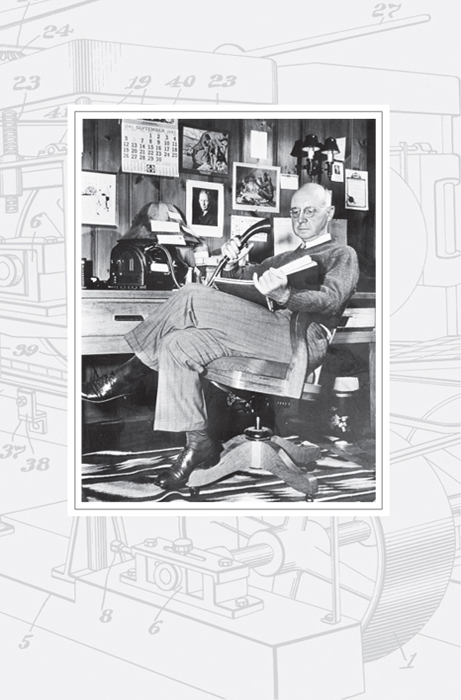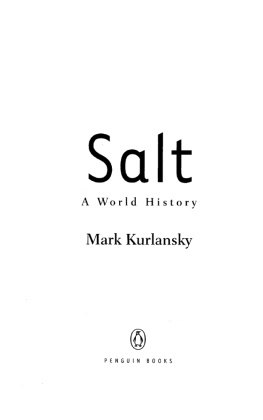Mark Kurlansky - Birdseye: The Adventures of a Curious Man
Here you can read online Mark Kurlansky - Birdseye: The Adventures of a Curious Man full text of the book (entire story) in english for free. Download pdf and epub, get meaning, cover and reviews about this ebook. year: 2012, publisher: Doubleday, genre: Non-fiction. Description of the work, (preface) as well as reviews are available. Best literature library LitArk.com created for fans of good reading and offers a wide selection of genres:
Romance novel
Science fiction
Adventure
Detective
Science
History
Home and family
Prose
Art
Politics
Computer
Non-fiction
Religion
Business
Children
Humor
Choose a favorite category and find really read worthwhile books. Enjoy immersion in the world of imagination, feel the emotions of the characters or learn something new for yourself, make an fascinating discovery.

- Book:Birdseye: The Adventures of a Curious Man
- Author:
- Publisher:Doubleday
- Genre:
- Year:2012
- Rating:3 / 5
- Favourites:Add to favourites
- Your mark:
- 60
- 1
- 2
- 3
- 4
- 5
Birdseye: The Adventures of a Curious Man: summary, description and annotation
We offer to read an annotation, description, summary or preface (depends on what the author of the book "Birdseye: The Adventures of a Curious Man" wrote himself). If you haven't found the necessary information about the book — write in the comments, we will try to find it.
Birdseye: The Adventures of a Curious Man — read online for free the complete book (whole text) full work
Below is the text of the book, divided by pages. System saving the place of the last page read, allows you to conveniently read the book "Birdseye: The Adventures of a Curious Man" online for free, without having to search again every time where you left off. Put a bookmark, and you can go to the page where you finished reading at any time.
Font size:
Interval:
Bookmark:




Copyright 2012 by Mark Kurlansky
All rights reserved. Published in the United States by Doubleday, a division of Random House, Inc., New York, and in Canada by Random House of Canada Limited, Toronto.
www.doubleday.com
DOUBLEDAY and the portrayal of an anchor with a dolphin are registered trademarks of Random House, Inc.
constitute an extension to this copyright page.
Jacket design by Michael J. Windsor
Jacket photograph courtesy of Pinnacle Foods. Birds Eye is a registered trademark of Pinnacle Foods LLC.
Library of Congress Cataloging-in-Publication Data
Kurlansky, Mark.
Birdseye : the adventures of a curious man / Mark Kurlansky.1st ed.
p. cm.
1. Birdseye, Clarence, 18861956. 2. Frozen foods industryUnited StatesHistory. 3. InventorsUnited StatesBiography. 4. BusinessmenUnited StatesBiography. I. Title.
HD9217.U52B575 2012
338.766402853092dc23
[B]
2011044891
eISBN: 978-0-385-53588-5
v3.1
To the memory of Linda Perney.
The best of friends, who always listened and laughed
but left too soon.
To be perfectly honest, I am best described as just a guy with a very large bump of curiosity and a gambling instinct.
C LARENCE B IRDSEYE , The American Magazine,
February 1951
Curiosity is one of the permanent and certain characteristics of a vigorous intellect.
S AMUEL J OHNSON , The Rambler,
March 12, 1751
I never met Clarence Birdseye, who died shortly before I turned eight years old in 1956. I never met any of his seven siblings nor his wife, Eleanor. I met only one of his four children, the eldest, Kellogg, whom I interviewed when researching my book about cod. His grandchildren were all very young when Birdseye died and know little of him. I did interview two surviving sisters-in-law and numerous people who had known him.
The work of a biographer often seems to resemble that of a detective, chasing down clues. Birdseye left a scattered and incomplete record. There is no autobiography or memoir. Surprisingly, the only book Birdseye has left us is a small volume on gardening, which was mostly written by his wife. Huge help was provided by one of the grandsons, Henry, who had more than twenty unopened boxes, which, once he was easily persuaded to open them, revealed a few treasures, including numerous letters from Labrador and Peru. Another grandson, Michael, had a few pieces of the puzzle, such as a collection of his patents and some lost magazine articles. Kellogg, the son, had eight leather-bound handwritten journals from Birdseyes time in Labrador, which Kelloggs widow, Gypsy, donated to Amherst College. They show a great deal about his quirks and interests as well as activities but were not laid out in a way to give a later historian a clear picture of events.
Birdseyes colleagues and collaborators wrote about him. Birdseye wrote numerous articles about himself and his ideas. But the subject himself is not always an infallible source either, especially a man like Birdseye who had an image of himself that he wanted to promotea very American image of a lot of audacity, not much intellect, and a pioneer spirit. The first and last of these were largely true, the second manifestly not. There are many brief articles on the life of Clarence Birdseye, some written in his lifetime, some at the time of his death, some later. Most of these articles say the exact same thingssome true and some not, often with incorrect dates. Unfortunately, these articles appear to have been the source for more articles, and so often the errors are repeated. There are at least forty encyclopedias and dictionaries that contain entries on Clarence Birdseye ranging from general, to business, to inventors, to food. But these too are full of errors and conflicting information.
When I decided to write this book, I had already written about Birdseye in three of my booksthe history of cod, the history of salt, and the history of Gloucester. It was time to separate myth from truth and find out who this man with the funny name who changed our way of life really was.
Undeniably, Birdseye changed our civilization. He created an industry by modernizing the process of food preservation and in so doing nationalized and then internationalized food distribution. Birdseye was among the first to talk about that internationalization. In a speech at Montreals McGill University in 1943, he predicted the postwar world when he announced, Tomorrow the industry will become truly international. And he was right. This facilitated urban living and helped to take people away from the farms, so that by the early years of the twenty-first century, for the first time in human history, the majority of people on earth lived in an urban area. This would have been no surprise to Birdseye, who often spoke of how improved food preservation made urban life possible.
For many people a major issue is the internationalization of food distribution. Birdseye greatly contributed to the development of industrial-scale agriculture. He even worked with farmers to make their products more suitable for industry. But unlike people today who have grown distrustful of big business, for Birdseye, a product of the zenith of the Industrial Revolution, industry was always a good word, without negative connotations. Todays locavore movementthe movement to shun food from afar and eat what is produced locallywould have perplexed him. Why, Birdseye would have wondered, would you want to be limited by local production when the food of the world is available? What would he have thought to see that in his hometown of Brooklyn and his adopted home of Gloucester, there are open-air markets selling local produce when consumers could go to a supermarket and buy the food of California, France, and China for less money? It would have made little sense to Birdseye to prefer small artisanal farms with low and inconsistent yields to the miracles of agribusiness.
Birdseye loved food, loved to cook, and wrote, thought, and talked about eating much more than most people. He was what would be called today a foodie. But he was a nineteenth-century foodie, a foodie in reverse who ate wild local food and artisanally made products, the food of family farms, but who dreamed of making food industrial. It can and probably always will be debated whether this is a good thing. The real argument is whether in changing our eating habits, Birdseye made life better. He personally had no doubt that what he was doing was improving life, but that is largely because he considered his frozen food to be fresh. The idea still exists in the odd commercial oxymoron fresh frozen. An increasing number of people today ask what this phrase means. How can it be fresh if it is frozen? The claim is that it was preserved in a fresh state. When Birdseye was developing fast freezing, the product seemed remarkably fresh when compared with the existing preserved foodsslow frozen, canned, salted, or smoked.
My grandfather was a tailor, and he hand made all of my fathers clothes. And so my father grew up dreaming of someday owning a factory-made suit. We are all more reactive against the conditions we inherit than we realize. In the postindustrial world we have become anti-industry, and it is useful and fascinating to get to know a man of vision and imagination who genuinely believed in industrial answers to lifes problems. To understand Birdseye in the context of his times, we need to grasp that people who are accustomed only to artisanal goods long for the industrial. It is only when the usual product is industrial that the artisanal is longed for. That is why artisanal food, the dream of the food of family farms, caught on so powerfully in California, one of the early strongholds of agribusiness with little tradition of small family farms. Birdseye came from a world that was becoming rapidly industrialized, and yet one in which food production was lagging behind and still mostly artisanal.
Font size:
Interval:
Bookmark:
Similar books «Birdseye: The Adventures of a Curious Man»
Look at similar books to Birdseye: The Adventures of a Curious Man. We have selected literature similar in name and meaning in the hope of providing readers with more options to find new, interesting, not yet read works.
Discussion, reviews of the book Birdseye: The Adventures of a Curious Man and just readers' own opinions. Leave your comments, write what you think about the work, its meaning or the main characters. Specify what exactly you liked and what you didn't like, and why you think so.









